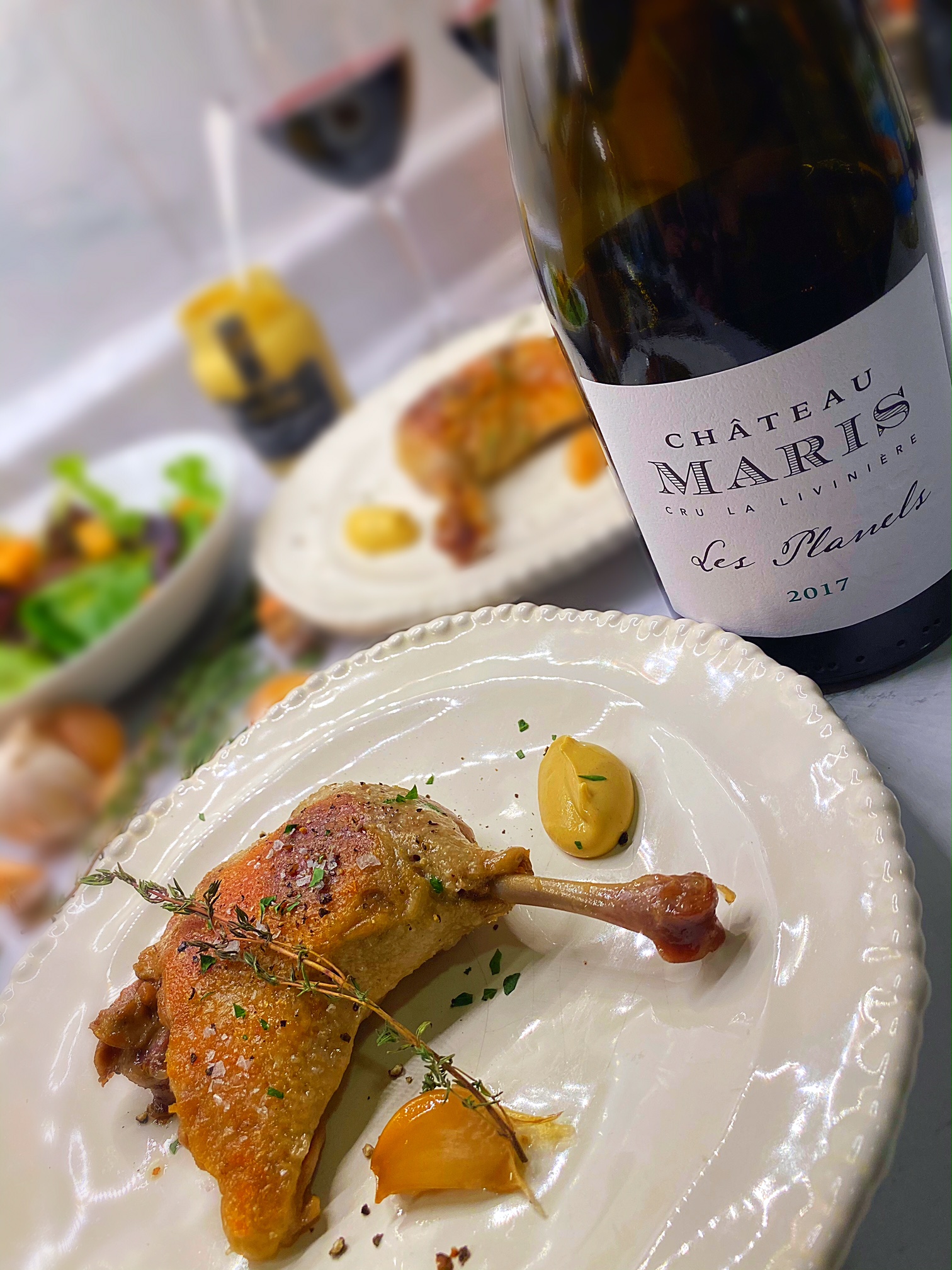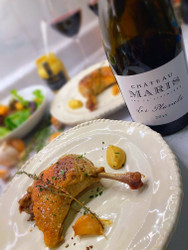Confit de Canard
Posted by Stephan Lublin on November 09 2020 11:29am
The classics - I love ‘em. The staples of French gastronomy like Boeuf Bourguignon, Coq au Vin, Cassoulet, and Boudin Noir call to me in a way that doesn’t quite make sense for a boy from Ohio. They feel like the comfort foods from my youth, something grandma used to make that, when each time eaten, make me feel nostalgic for my childhood and for the memories from family dinners past. But in reality, I don’t have these childhood memories and most of these dishes I had never tried until my early twenties - grandma didn’t cook much and she’s for sure not French. Nevertheless, that doesn’t change my feelings - my sentiments for these historic dishes, some of which are hundreds of years old and the cornerstone of French gastronomy.
One such dish, that can be found in nearly every French bistro around the world, is Confit de Canard, or duck leg slowly cooked submerged in duck fat until the meat is literally falling off the bone. Before it’s served, the skin is crisped to provide a crackling contrast to the ultra-tender meat lying just beneath.
This winter-weather classic needs a sturdy wine to hold up to the richness of the duck leg, and not any wine will do. Light reds will just have their legs cut out from under them, and subtle flavors will be easily lost. We need a big wine with plenty to say, sturdy shoulders, and a lot of fruit.
Classic pairings include the satellite appellations of Saint-Émilion and the rustic red wines found in the Southwest of France, but can just as easily pair with the big wines of the Languedoc, particularly the bold fruit and spice driven wines Minervois. To find one such wine, we need not look any further than the Biodynamic boundary-pusher, Château Maris. The wines pair just as well, if not better, than any other wine to match this culinary canard creation.
Château Maris, located in the heart of the AOC of Minervois, in La Livinière, has been a leader in biodynamic agriculture for over 20 years. In 2002 they received Ecocert certification, Biodyvin in 2004, and Demeter certification in 2008 for their efforts.
In the vineyard they follow mother nature’s cues for guidance, using solar and lunar cycles for when to prune, harvest, and when to prepare homeopathic soil preparations. Diverse plantings amongst the vines include figs, thyme, olives, and many other plants, to create a healthy ecosystem. And their care for the environment goes beyond the vineyard, as Chateau Maris has created the first cellar made completely out of hemp bricks, a feat that took 8 years to realize. The facility is completely biodegradable, self-sufficient in energy, and has a negative carbon footprint. Native yeast is used for fermentation and each cuvée ferments in custom made thick concrete egg-shaped vats to encourage the natural energy of the fermenting must. With many micro-climates throughout the estate, Chateau Maris produces a number of wines, each with different and unique characteristics.
The 2017 “Les Planels” is 90% Syrah with small portions of Grenache and Carignan coming from 35 year-old vines surrounded by pine trees. The fermentation takes place over the course of eight days and then continues to macerate on the skins for an additional four weeks. It then ages for one year in French oak barrels, of which one-third are new.
In the glass it is intense opaque purple in color. Juicy, dense, dark berries and spice make up the nose, showing plenty of cassis, black cherry, baking spices and light toast notes. On the palate the full body, ripe fruit, and spice are all in sync and well balanced, a product and true testament of healthy, sun-drenched berries.
Perfectly matched with the Confit de Canard, the grippy tannins melt away and the fruit comes forward in a seductive manner - boosting both food and wine to new heights. But in the word’s of LeVar Burton from Reading Rainbow, “You don’t have to take my word for it,” as this recipe and pairing are easy to create in your own home, and your efforts will be greatly rewarded in the snowy, wintry months to come.
Confit de Canard:
2 Duck Legs, trimmed of excess fat (can be multiplied for more people)
Salt
Thyme sprigs
4 Garlic Clove
10-15 whole peppercorns
1 Bayleaf
Enough duck fat to cover the legs in a pot
Preheat the oven to 300 degrees. Sprinkle the legs with salt and set aside. Heat the duck fat to just a simmer in a medium sized pot and add the duck legs and aromatics Cover, and place into the preheated oven for 2 to 2.5 hours, depending on the size of the legs. Carefully remove the pot from the oven.
If eaten that day, crisp the skin by placing a circle of parchment paper in a saute pan. Arrange the legs skin-side down and crisp until golden brown on medium low heat. Season both sides with salt and pepper and serve with whole grain or dijon mustard, and of course, plenty of full bodied wine. Enjoy
(If not eaten that day, the legs can be kept submerged under the fat for a long time. Warm the duck legs in the fat, and crisp the skin when ready to eat.)


